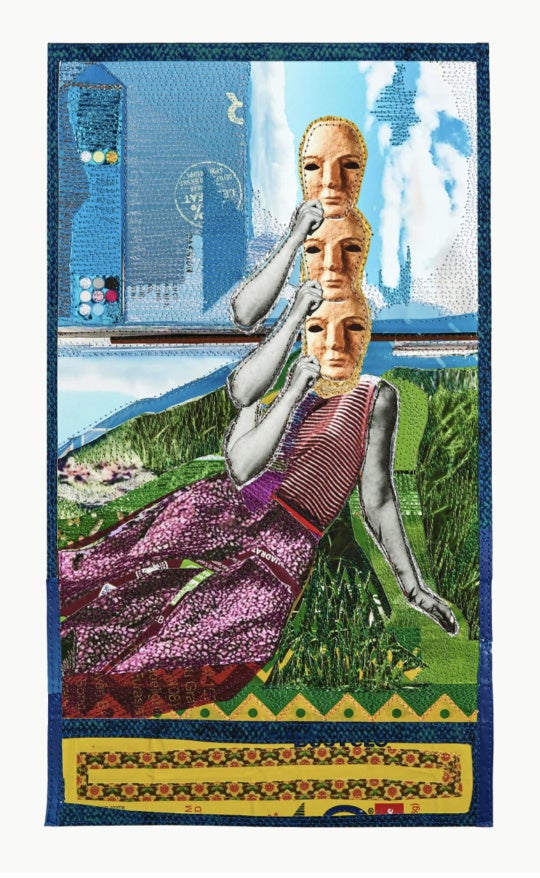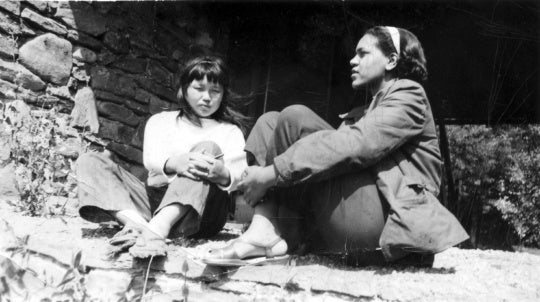
Photographed in black and white, a dirt road bisects an unpopulated landscape engulfed by dense kudzu vines. The picture might conjure the eerie backroads dreamed up by Flannery O’Connor save for an airplane in the upper right corner of sky. This image documents the site of an abandoned conference center, yet no visible architecture remains beneath the dense foliage. It is, perhaps, an unexpected image to open “Mark Steinmetz: Terminus,” at the High Museum of Art through June 3, a series of more than 60 silver gelatin print photographs taken from 2012 through 2017 in and around Atlanta’s Hartsfield-Jackson International Airport. Throughout, Steinmetz, who lives in Athens, Georgia, carefully draws out small details of experience.
“Terminus” is the current show in an ongoing documentary series at the High called Picturing the South. The title refers to the city’s first name, derived from the convergence of five railroad lines. Currently, Hartsfield-Jackson is the world’s busiest airport; almost 104 million passengers travelled through Atlanta’s airport in 2017. Steinmetz attends to both the busy hub of transportation and the surrounding Southern landscape. Throughout, he communicates an ordinary traveller’s experience. Instead of documenting spaces or times of day inaccessible to average airport-goers, he often arrived early before personal flights in order to spend time photographing.

Portraiture in Terminus tends to emphasize either individual contemplation or human relationships. Portraits of individuals waiting—sometimes on a bench, other times backlit by large airport windows—recall the luminescent quietude of Dutch Baroque painting. Others capture the peculiarities of individuals. Take, for example, a portly long-haired man gazing down at his cell phone in his tattooed hand, its headphones draped around his neck. Leaning against a rail, he has commanding presence reminiscent of old master painting. Simultaneously funny and reflective of his apparent solitude, his shirt reads, “I WOULD CUDDLE YOU SO HARD.” An adjacent image shows a woman with headphones, suggesting both their ubiquitousness and a self-imposed seclusion that, for better or worse, technology provides.
Countering these isolated, often contemplative figures, another photograph shows an older man tenderly grasping a woman’s shoulders as he looks into her eyes, their faces intimately close. Flanked by a pile of luggage and a parked car, it’s hard to tell whether it is a meeting or a goodbye, but the meeting is intense and transitory. Such candid shots of people coming and going are among the more expected but poignant photographs of the exhibition; excited greetings and sad farewells are, after all, among the more dramatic experiences to transpire at an airport.
As well as drawing attention to the human experience of the airport, Steinmetz devotes ample attention to the airport’s environs. Aerial photographs from the plane’s window and pictures of the surrounding landscape record the distinctive vistas of Atlanta. A prominent motif is kudzu, a ravenous nonnative plant. It suggests the abundance of foreign travellers passing through the airport. Further, the overgrown scenes of College Park point to underlying themes: transience and the clash of nature and culture. The abandoned landscapes suggest the passage of time on a grand scale. They conjure Romantic scenes of human civilization succumbing to nature, like American painter Thomas Cole’s Desolation, 1836.

The industrialized setting of the airport is Steinmetz’s subject as well. In an untitled image from 2015, airplanes are lined up in neat rows on a gleaming wet runway. An even gray mist fills the sky, broken near the horizon by the illumination of distant windows. Dwarfed by the expanse of the environment, the planes’ oblong forms echo the dark ovals of grass that interrupt the tarmac at regular intervals. Similarly, fog shrouds rows of cars, imbuing soft, spectral beauty on a typically marginal and in-aesthetic space—a parking lot.
Often, Steinmetz abstracts his subject. A picture taken from inside the plane’s interior shows a hand pushing open a window cover, casting stark illumination in the dark interior. The severe light source recalls the strategy of one of Steinmetz’s influences, Lee Friedlander, who often honed in on idiosyncratic details, such as the fragment of a Coca-Cola sign visible through an open bedroom window in Galax, Virginia, 1962. Like Friedlander, Steinmetz uses dramatic contrast within a small interior and communicates larger notions of place through subtle detail.

Among the more abstract photographs are nine images of the sky, hung in a neat grid. Jet contrails criss-cross the sky, creating geometric patterns or merging with puffy cumulus clouds. These recall American photographers Alfred Stieglitz’s well-known Equivalents of the 1920s and ’30s. The most reductive images include views of a plane’s wing from a passenger seat or long exposures taken at night, the resulting imagery often linear and geometric.
“Terminus” avoids heavy-handed commentary, and as praiseworthy as this eschewal of easy tropes is, it’s tempting to look for an edge: an expression of the harriedness of travel or timely political content. To be sure, social commentary is embedded in the lineage of documentary photographers Steinmetz seems to carry forward—such as Walker Evans or Garry Winogrand. Yet, its absence here seems appropriate. Steinmetz’s characteristically understated sensibility serves the project well, often revealing humanistic moments or unexpected formal elegance in the most unlikely places.
Rebecca Brantley teaches art history at Piedmont College, where she is also director of the Mason-Scharfenstein Museum of Art.




